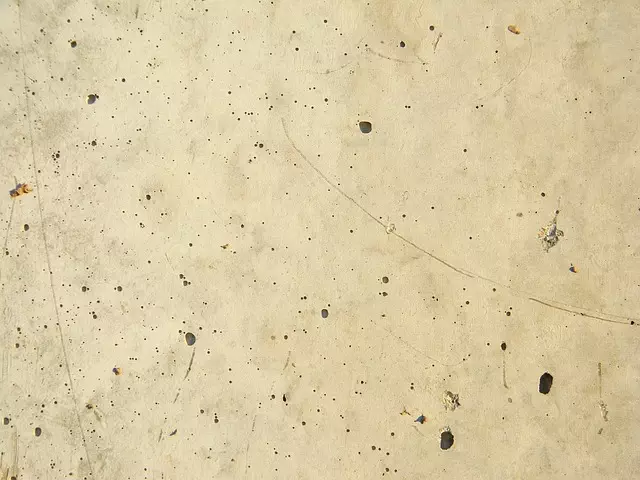Concrete Repair: Navigating Common Issues, Methods, and Maintenance
Concrete foundation repairs are crucial for maintaining structural integrity due to common issues li…….

Concrete foundation repairs are crucial for maintaining structural integrity due to common issues like cracks, uneven settling, and water damage. Prompt evaluation of signs like noticeable cracks or stuck doors is vital. Different repair techniques target structural instability, surface imperfections, and crack propagation using methods like underpinning, patching, epoxy injections, and carbon fiber wrapping. Choosing the right material and techniques based on damage extent ensures durable repairs. Cost varies with issue severity, and regular maintenance, including drainage systems and protective coatings, prevents future concrete foundation problems. Prompt action by professionals is essential for severe damage to prevent major structural failures.
Concrete foundations are the backbone of any structure, making their repair a critical aspect of property maintenance. This comprehensive guide delves into the intricate world of concrete foundation repairs, addressing common issues like cracks, settlement, and heave caused by various factors. From understanding damage assessment to exploring repair methods, choosing materials, and cost considerations, this article offers an authoritative overview for both homeowners and professionals seeking effective solutions for robust, long-lasting concrete structures.
Understanding Concrete Foundation Repairs: Common Issues and Causes

Concrete foundation repairs are often necessary due to a range of common issues and their underlying causes. One of the primary problems is cracks, which can appear for various reasons such as settlement, shifting soil, or excessive moisture. These cracks might seem harmless but can indicate more severe structural damage if left unchecked. Another frequent issue is uneven settling, where parts of the foundation sink at different rates due to variations in soil composition or underlying water tables.
Additionally, concrete repair becomes essential when dealing with water intrusion, which can lead to corrosion of steel reinforcing bars and further compromise the structure. Poorly installed or damaged drainage systems can exacerbate these problems by allowing water to pool around the foundation walls. Addressing these issues promptly is crucial to prevent more significant structural failures and maintain the integrity of any building constructed on a concrete foundation.
Evaluating Damage: Identifying Signs Requiring Repair

Evaluating damage is a crucial step in determining whether concrete foundation repair is necessary. Signs that your concrete foundation may need repairing include noticeable cracks, uneven or sloping surfaces, doors and windows that stick or don’t close properly, and water seepage. These issues can indicate structural problems that, if left unaddressed, could lead to more severe damage over time.
Close inspection of the foundation is key. Minor cracks less than 1/8 inch wide are typically normal and not a cause for immediate concern. However, larger cracks, bulging concrete, or signs of water damage require attention from a professional. Regular maintenance checks can help identify problems early on, making repairs more manageable and cost-effective.
Types of Concrete Repair Methods: An Overview

Concrete repair methods vary depending on the type and extent of damage. Some common types include structural repairs, surface repairs, and crack repairs. Structural repairs address issues like settling or shifting foundations, which might require techniques such as underpinning, where additional support is injected beneath the concrete to stabilize it. Surface repairs handle aesthetic concerns, like patching holes or repairing spalled (chipped) surfaces, using materials that match the existing concrete for a seamless finish.
Crack repairs focus on preventing further damage and water infiltration. This can involve filling cracks with epoxy injections or applying surface treatments to create a protective barrier. Choosing the right repair method is crucial; each technique caters to specific needs, ensuring long-lasting solutions for various concrete issues.
Step-by-Step Process of Concrete Foundation Repair

The process of repairing a concrete foundation involves several key steps, each crucial in ensuring stability and longevity for your structure. It begins with an extensive inspection to identify the extent of damage. This includes assessing cracks, settlement issues, or any signs of water intrusion, as these are common indicators of foundation problems. Once identified, the affected area is carefully cleaned to remove debris, loose concrete, or any materials that could hinder repair.
Next, depending on the type and severity of damage, various methods are employed. This might include patching small cracks with a suitable concrete mix, using epoxy injections for more extensive repairs, or in severe cases, replacing entire sections of the foundation. After the repair material has set, a final inspection is conducted to guarantee the work meets the required standards, ensuring your property’s structural integrity and safeguarding against future issues.
Choosing the Right Repair Material and Techniques

Choosing the right repair material is a crucial step in any concrete foundation repair project. The suitability of a material depends on several factors, including the extent of damage, the structural requirements, and environmental conditions. For instance, epoxy injections are ideal for repairing small cracks, while larger defects might necessitate the use of cement-based mortar or even steel reinforcement bars for more extensive repairs.
Techniques play an equally important role in ensuring long-lasting concrete repair. Methods such as carbon fiber wrapping offer non-destructive solutions, enhancing structural integrity without causing further damage. Jacking and underpinning techniques are employed to lift and stabilize sinking foundations, addressing the root cause rather than merely filling cracks. These tailored approaches guarantee effective, durable repairs that stand the test of time, maintaining the structural soundness of concrete structures.
Cost Considerations for Concrete Foundation Repair Projects

When it comes to concrete foundation repair, cost considerations are a key aspect that homeowners and contractors must address. The expense of fixing a concrete issue can vary greatly depending on several factors. First, the extent of the damage plays a significant role; minor cracks or erosion might require less intensive and, therefore, less costly repairs compared to structural failures or large-scale damage. Additionally, the type of repair method chosen will impact costs; options range from simple crack filling to more complex techniques like underpinning or replacing sections of the foundation.
Another factor is the size of the project. Smaller, localized repairs are generally more affordable than extensive, whole-foundation restorations. Moreover, labor and material costs can fluctuate based on regional factors, availability, and market trends. It’s essential to obtain quotes from multiple contractors to gain a clear understanding of the financial implications. This allows for informed decision-making and ensures you choose a repair method that suits both your needs and your budget.
Preventive Measures: Strengthening Your Concrete Foundation

Preventing concrete foundation issues is key to saving costs and ensuring structural integrity over time. Regular inspection is the first step; identifying cracks, uneven settling, or water damage early can prevent minor problems from becoming major repairs. Addressing these signs promptly is crucial for concrete repair.
Strengthening your foundation involves proper drainage systems to mitigate water accumulation, which can cause erosion and weaken concrete. Using high-quality materials during construction and ensuring adequate compaction can also contribute to a more robust foundation. Regular maintenance, such as sealing cracks and applying protective coatings, adds an extra layer of defense against environmental factors that might compromise the concrete’s integrity.
When to Call a Professional: Expert Assistance for Major Repairs

If you notice signs of major concrete damage, such as large cracks, heaving, or uneven surfaces, it’s crucial to call a professional for concrete repair services. While minor cracks and surface imperfections can often be addressed with DIY methods, more extensive issues may require expert assistance. Structural damage caused by improper initial construction, settlement, or shifting soil can compromise the integrity of your foundation, making timely professional intervention essential to prevent further deterioration.
Professional concrete repair specialists have the expertise, equipment, and knowledge to accurately diagnose the root cause of problems and implement effective solutions. They offer advanced techniques like slab jacking, mudjacking, or full foundation replacement, ensuring long-lasting repairs that can save you from costly future damages.







